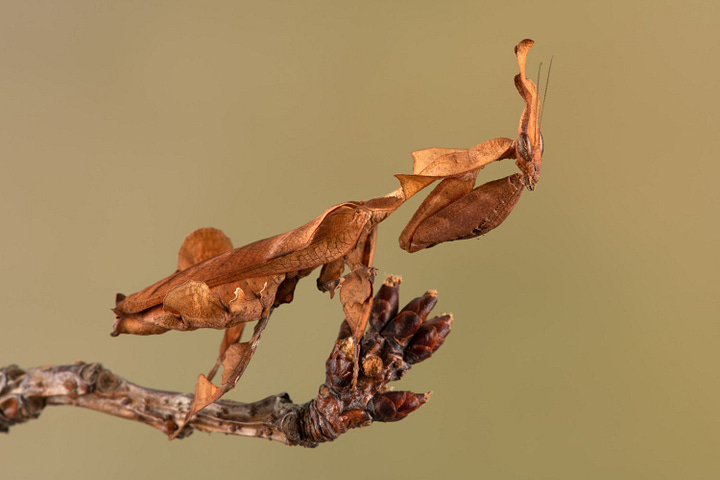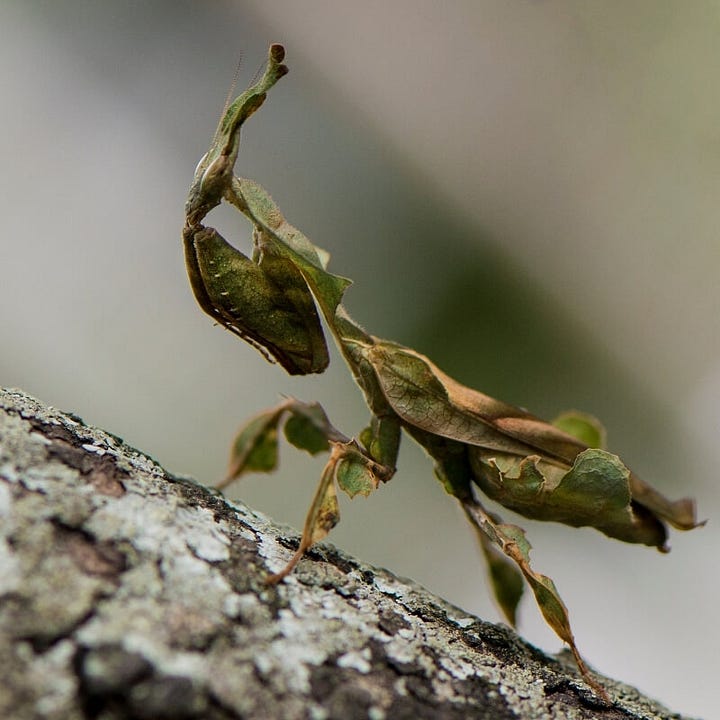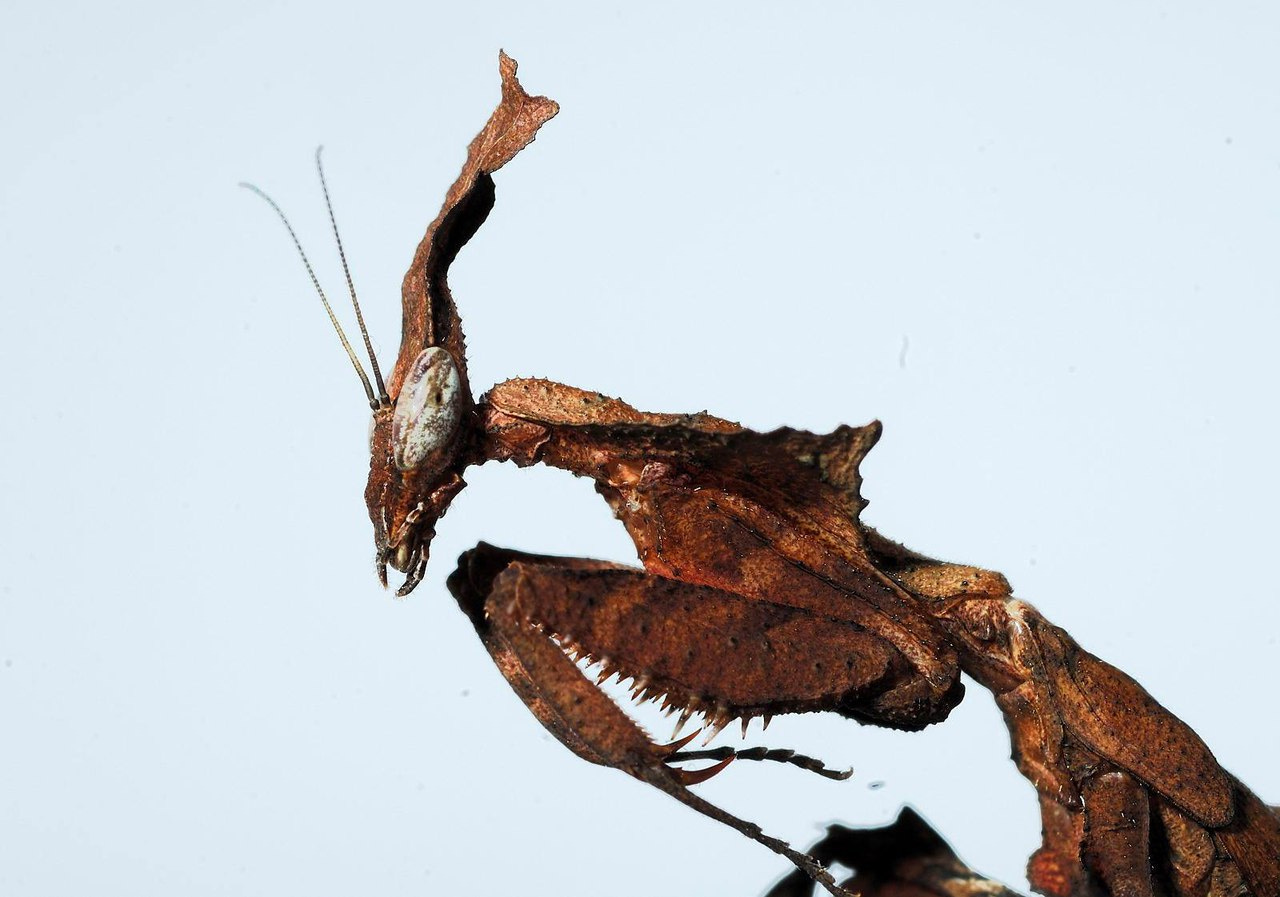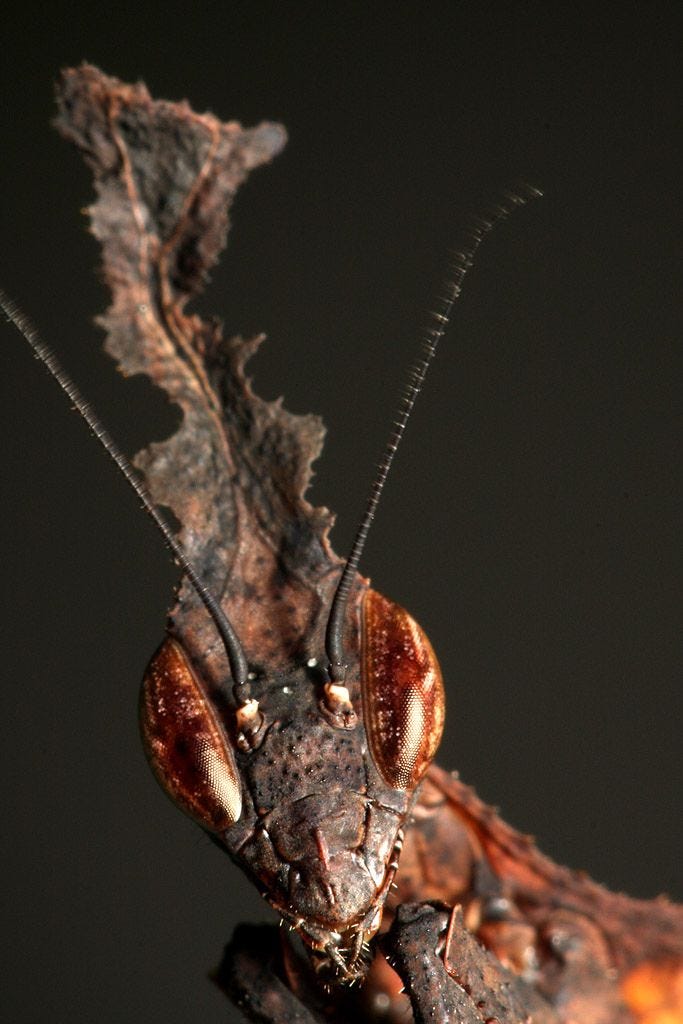ISSUE #11: The Ghost Mantis Is a Living Dead Leaf
Goth bug alert.
It’s the second Friday of October, and a Friday the 13th, no less. What better way to celebrate than with another spooky bug? This week, we have a species of praying mantis, which is a frightening group of bugs in its own right. Mantids are lightning-fast killers, relying on instinct and camouflage to hunt and ambush their prey. Some look like bright green leaves, others like the flowers they hide inside, and others like cast off plant matter, mottled and dull.
Camouflage in insects is important for two reasons: It helps predators hunt, and it helps everything stay out of sight from things that could eat them. Though they’re at the top of the insect food chain, mantids aren’t immune to predation from spiders, birds, or small mammals, depending on where they live.
Some bugs make it their business to look as unappealing as possible. There are a few species of moth that have evolved to look like bird droppings. There are others look like broken twigs. It is nearly impossible to distinguish a stick insect from an actual stick, and neither seem particularly edible.
The ghost mantis is one of these. Instead of evolving bright green wings or flashy, colorful body parts, the ghost mantis looks like a bunch of crumpled-up dead leaves. At first glance, it almost looks as if the mantis itself has been stepped on, so complete is their camouflage. Their heads are long and thin, with a leafy crest that looks like a broken stem. They keep their serrated forearms close to their forebodies and crouch low, tucking their other pairs of legs closely next to their abdomens, which are furled like fallen foliage.


Ghost mantids, Phyllocrania paradoxa, are native throughout Africa and its islands, as well as southern Europe, and are considered a species of “miniature” mantis, as the biggest don’t grow any bigger than about 2 inches long. They vary in coloration, some darkening to almost black as adults, and some becoming deep tan and even pale green. The lines and shadows on their bodies that appear as leaflike folds and creases are actually just shading of pigment, meant to break up the lines of the mantis body that their predators and prey would recognize.
Here is a video of a delightful yellow-green one. (After about 20 seconds there’s some feeding going on, so if you’d rather not see that you’ve been warned.)
Though they’re supposed to look like something we’d either ignore or brush aside, the closer you get to these little mantids the more impressive they look. They have that characteristic mantis charisma, the ability to stand erect and look around not unlike a tiny person, and a spooky, calculating look in their enormous puppy dog eyes. Watch where you step… or else.




Spooky. Loved it.
It's funny watching how delicately it eats compared to my pinktoe tarantula; she jumps on stuff and snatches it up the second she sees what it is